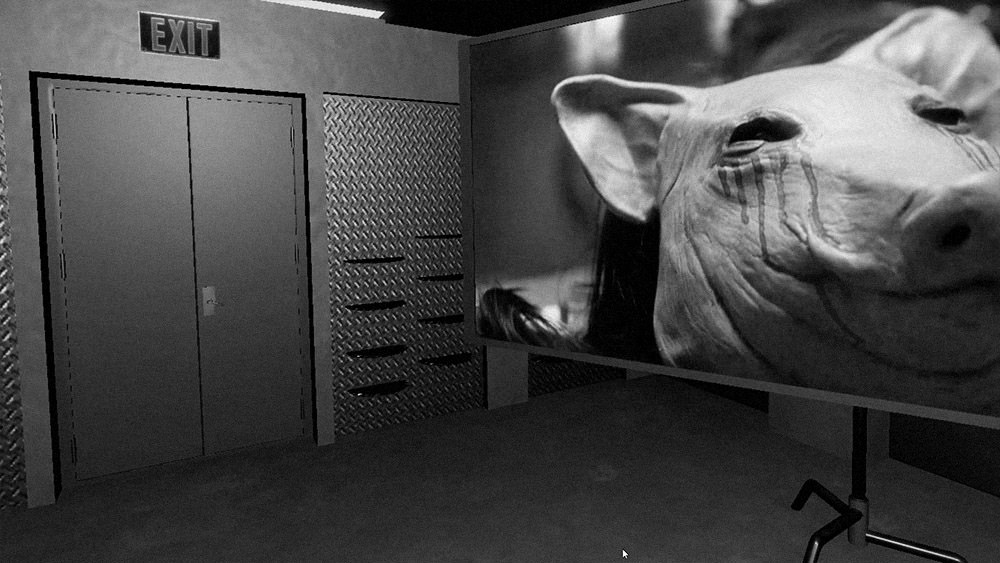To market the theatrical release of Jigsaw, Lionsgate partnered with Unity to create the first display ad in VR that when selected, launched an interactive experience. Running the campaign for two weeks, Unity simultaneously ran a case study to measure its emotional impact on users.
When Unity partnered with Lionsgate for the activation, the team knew it couldn’t display the ad just anywhere. But with more than 60 percent of AR/VR content created with Unity, the company had no shortage of apps to consider for the activation, and it ended up finding the two that best served their campaign.
“Jigsaw is a mass market horror movie, so we worked with Lionsgate to find apps that made sense for their audience,” Agatha Bochenek, head of mobile and VR/AR advertising sales at Unity Technologies told AListDaily. “Samsung Internet for VR is a mass reach app that tapped into the gen pop audience. Nanite Fulcrum is a comic book app with a younger male, demographic that reached horror movie fans. The apps worked well together.”
From October 23 to November 6, display ads for Jigsaw Virtual Room appeared within the Samsung Internet for VR app and Siraloid’s Nanite Fulcrum. When selected, users were instantly transported into the Saw movie franchise as one of Jigsaw’s intended victims.
Four possible interactions followed, allowing the user to control the story while a two-minute timer ticked down. Although users could opt to do nothing and let the timer run out, 73 percent chose to “play a game” and make a choice on whether they or a stranger would survive. If they chose life, gears were dropped down that needed to be placed on the correct spokes to win their freedom. Over half—56 percent—attempted the puzzle. Solving it allowed users to explore Jigsaw’s room for 30 seconds.
Regardless of the outcome, users were teleported to a room where a 30-second trailer for the film was played. Users could leave at any time, but 70 percent chose to watch the preview in full.
In addition to measuring engagement, Unity teamed up with Isobar’s Marketing Intelligence Practice to see just how scary Jigsaw Virtual Room really was to users. Isobar performed biometric measurement and an emotional response survey of people who experienced the movie trailer in VR and in mobile video.
Heart rates elevated by 24 percent, sweating by 44 percent and muscle activation associated with smiling increased more than three times, according to the findings. These statistics apply to those who completed the entire VR experience and not just the trailer at the end. Unity concludes that the act of being in VR alone doesn’t elicit such emotions, but rather the fully interactive format of the ad.
“When looking at the focus group results by the individual, we saw that people who chose not to interact with the experience still had strong emotional reactions,” said Bochenek, “but only during the interactive portion—not the video trailer in VR. This leads us to believe that giving the user agency and engaging them with a responsive story, even if they ultimately choose not to engage, is where the power of interactive content lies.”
Bochenik says the key to a successful VR ad of this type is to make the user feel like they’re part of the action but warns against making interactions too difficult.
“The story needs to be compelling regardless of interaction,” she noted. “Adding three-to-four interactions in an ad ensures that the experience is effective for all users as they can choose how the story progresses and their individual engagement level. It’s truly personalized advertising.”
Advertising in VR can be challenging—after all, a user isn’t going to tolerate anything that disrupts immersion.
“Deep, immersive VR works and can be done at scale,” said Bochenek, adding that brands shouldn’t assume that VR is inaccessible or niche. “VR is gaining more and more penetration by the day and there will come a point where users are desensitized to the medium, just like they become to everything.
“The time is now to use this medium to create a lifelong relationship with your consumer and it is possible for every brand to engage in this space with positive ROI,” she added. “Additionally, the responsive storytelling techniques that elicit a much stronger emotional response than traditional media are also the format for augmented reality. This means advertisers can run cross-platform VR, AR, and 360 ads that reach hundreds of millions of users making the format even more accessible. I think a lot of marketers know that VR is effective. Now they can see just how effective and hopefully having those stats translates to more of them creating these types of campaigns today.”

